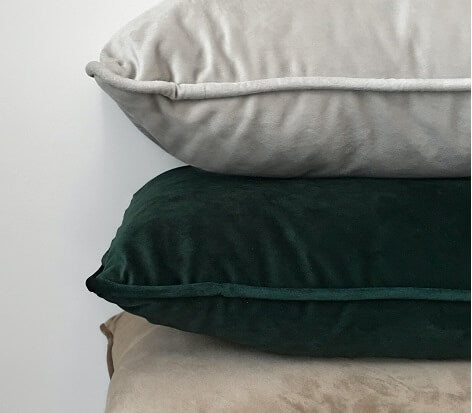For those who suffer from tinnitus and other sleep disorders, finding a solution to help them get a good night's rest can be a constant struggle. The constant ringing or buzzing in the ears can make it difficult to fall asleep and stay asleep, leading to feelings of frustration and exhaustion. However, there is hope on the horizon in the form of white noise. White noise has been found to be an effective tool for managing tinnitus and other sleep disorders, providing relief and allowing individuals to sleep soundly once again.

Understanding Tinnitus and Its Impact on Sleep
Tinnitus, a condition marked by an incessant ringing, buzzing, or humming in the ears, poses significant challenges for those attempting to get a restful night's sleep. The relentless presence of these sounds can severely disrupt the natural process of falling asleep, as the brain struggles to ignore these distractions. This disruption can significantly degrade the quality of sleep, making it difficult for individuals to enter the deeper, more restorative stages of sleep. As a result, many individuals with tinnitus experience a cycle of sleep deprivation and daytime fatigue, which can further exacerbate their condition. The impact of tinnitus on sleep is not merely a matter of physical discomfort but also extends to mental health, with many sufferers reporting increased stress and anxiety levels due to their sleep disturbances. This heightened stress can create a vicious cycle, where anxiety about sleep leads to increased difficulty sleeping, which in turn leads to more stress and anxiety. The challenge of managing tinnitus at night can also lead to a reliance on sleep aids or medications, which may offer temporary relief but do not address the underlying issue. In understanding the profound impact tinnitus can have on sleep, the importance of finding effective management strategies, such as white noise, becomes even more critical for improving the quality of life for those affected by this condition.



Examples of White Noise:
Whirring fan. Radio or television static. Vacuum. Humming air conditioner
What Is White Noise and How Does It Work?
White noise encompasses all audible frequencies distributed evenly, creating a steady and uniform sound landscape. This consistent soundscape is the key to its effectiveness, especially in the context of sleep and tinnitus management. When white noise is played, it blends into the background, creating a masking effect for intrusive noises that can disrupt sleep, such as the persistent ringing characteristic of tinnitus. This masking phenomenon is not about canceling out unwanted noise but rather about diminishing the contrast between background sounds and peak sounds like tinnitus, making them less noticeable and bothersome. The brain finds it easier to adapt to the monotonous sound of white noise, focusing less on the disruptive sounds and more on relaxation and sleep induction. By integrating seamlessly with the auditory environment, white noise paves the way for a smoother transition into sleep, providing a distraction-free zone that encourages deeper and more restful sleep cycles. This makes it an invaluable tool for individuals seeking a non-invasive and straightforward method to improve their sleep quality amidst challenges posed by tinnitus and other auditory disturbances.
The Benefits of Using White Noise for Tinnitus Sufferers
For those grappling with tinnitus, white noise serves as a significant ally, offering a unique form of relief that tackles the core of the disturbance. By creating a constant auditory backdrop, it effectively masks the intrusive sounds that plague sufferers, drastically reducing their impact and prominence during nighttime routines. This masking ability not only facilitates the onset of sleep but also ensures a more uninterrupted rest, crucial for the body’s recovery and well-being. Moreover, white noise's uniform sound spectrum promotes a serene and tranquil environment, essential for easing the mind and lowering stress levels. Stress, a known aggravator of tinnitus, when reduced, can lead to a noticeable improvement in both the severity of the tinnitus symptoms and the overall quality of sleep. The simplicity and non-invasiveness of white noise as a management tool make it an appealing option for many, providing a pathway to a more peaceful night's sleep without the need for medication or complex interventions. Engaging with this sound therapy empowers individuals to regain control over their sleep environment, transforming their bedtime experience into a more positive and restful one.
What is the psychology behind white noise?
Stress Reduction: The consistent sound of white noise can have a calming effect, reducing stress and anxiety, particularly in high-pressure environments. Better Sleep: White noise helps many people fall asleep faster and enjoy more restful sleep by masking disruptive noises and promoting a sense of security.
Exploring Other Sleep Disorders Alleviated by White Noise
Beyond tinnitus, white noise extends its therapeutic benefits to a spectrum of other sleep disturbances. For those wrestling with insomnia, the constant hum of white noise can act as a gentle lullaby, coaxing the mind into a state of relaxation conducive to sleep. This can be particularly beneficial for individuals whose insomnia stems from an inability to quiet an overactive mind at night. Similarly, people facing the challenges of sleep apnea may find solace in white noise's ability to drown out the irregular breathing noises that accompany this condition, fostering a more stable and less interrupted sleep pattern. Additionally, restless leg syndrome sufferers may discover that the soothing effect of white noise helps to diminish the sensory disruptions that prevent them from finding a comfortable and restful sleeping position. By enveloping the bedroom in a consistent sound, white noise can create an auditory blanket that shields sleepers from the external and internal noises that disrupt sleep, thereby aiding in the reduction of sleep latency and the enhancement of overall sleep quality for a wide array of sleep-related issues. This makes white noise a versatile and invaluable tool in the quest for better sleep, offering relief and comfort to those hindered by various sleep disorders.

How to Incorporate White Noise into Your Sleep Routine
Integrating white noise into your bedtime routine is straightforward and customizable to your preferences. You can begin by selecting a dedicated white noise machine designed to offer a range of sounds from rain to ocean waves, allowing you to choose the one most soothing to you. Alternatively, leveraging technology, numerous apps are available that deliver a wide array of white noise options right at your fingertips. These can be especially useful for those who prefer having control over their soundscapes with the convenience of a smartphone or tablet. For a more traditional approach, consider playing white noise through CDs or streaming services that offer extended tracks designed for sleep. Setting up the sound to play throughout the night is key, ensuring it’s at a comfortable volume that masks disruptive noises without becoming a disturbance itself. Begin this practice by introducing white noise into your environment a few minutes before you plan to sleep, gradually making it a pivotal part of your nighttime ritual. Experimentation with sound types and volumes is crucial to tailoring the experience to your needs, making the process of falling asleep with white noise uniquely yours.
Potential Drawbacks and Considerations of Using White Noise
While many find solace in the steady hum of white noise, it’s essential to approach its usage with mindfulness to ensure it complements rather than complicates sleep hygiene. One consideration is the potential for white noise to disrupt the sleep of those who share the room but may not find the sound as soothing. This discrepancy can necessitate finding a sound level and type that is mutually agreeable, or considering personal audio devices for a more individualized experience. Additionally, over-reliance on white noise to initiate sleep might, for some, lead to a form of dependency, making it challenging to sleep in environments where white noise is not available. It's also crucial to monitor the volume at which white noise is played; too high could potentially contribute to long-term hearing issues, particularly for those who use it for extended periods or with headphones. Finally, while white noise is broadly beneficial, the nuances of personal preference for sound type — whether static white noise or more natural sounds like rain or ocean waves — can greatly influence its effectiveness and satisfaction. Tailoring the white noise experience to fit personal comfort and health needs is key, as is remaining open to adjusting or exploring alternatives should the need arise.
Testimonials and Success Stories
Countless individuals have embraced white noise as a vital component of their nightly ritual, discovering how to sleep when someone is snoring with many sharing transformative experiences. One user recounted, "After years of battling with sleepless nights due to tinnitus, white noise has been a game-changer for me. It’s like the buzzing in my ears fades into the background, and I can finally rest." Another shared, "The gentle hum of white noise for snoring drowns out my partner's snoring, and I've noticed a significant improvement in my sleep quality and morning energy levels." Parents of newborns have also found solace in white noise, stating, "Our baby falls asleep faster and stays asleep longer, thanks to the soothing sound of white noise. It's made a world of difference for our family's sleep schedule." These stories highlight the diverse benefits and the potential of white noise to improve sleep patterns, offering hope and relief to those disturbed by various sleep challenges.
FAQ
Does white noise help you sleep with tinnitus?
White noise can be a good option for tinnitus treatment. It's not a cure for tinnitus, but it may help you sleep better. The key here is to try out different kinds of white noise and see which works best for you.
Is it bad to sleep with white noise every night?
However, a systematic review published in Sleep Medicine Reviews found white noise had little beneficial effect on sleep. What's more, according to Dr. Javaheri, white noise may interrupt important stages of sleep, such as REM sleep or deep sleep, and affect hearing if it is too loud.
How to sleep with tinnitus ringing in the ears?
Use blackout curtains or an eye mask to block out light and signal to your body that it's time to sleep. Use a TV, white noise apps or sound machines at a low volume to mask the tinnitus. You might want to experiment with ocean waves, falling rain, nature sounds or other gentle noises to see what works best.
What to read next

How to Clean Your Foam Ear Plugs and Extend Their Life

How to Put Ear Plugs In for a Good Night's Sleep

How to Get a Good Night's Sleep with a Snoring Partner
What to buy

White Noise Machine With 10 Natural Sounds
From: $30.40

Noise Cancelling Sleeping Earplugs
$23.58
 Sleeping Eye Mask: Hot and Cold Dual Use
Sleeping Eye Mask: Hot and Cold Dual Use
From: $14.60






